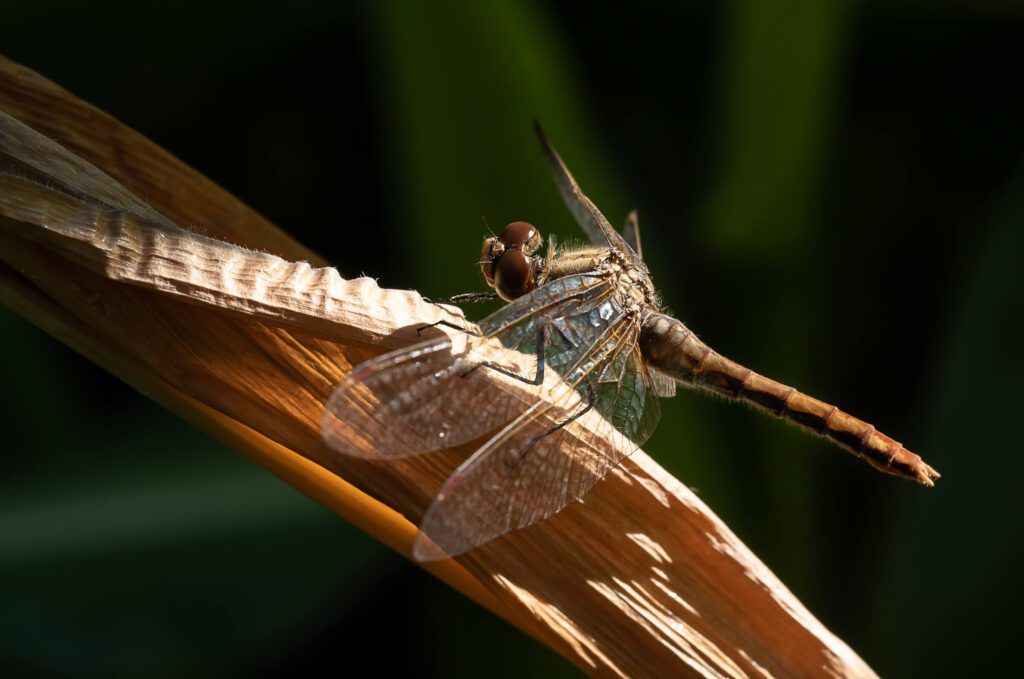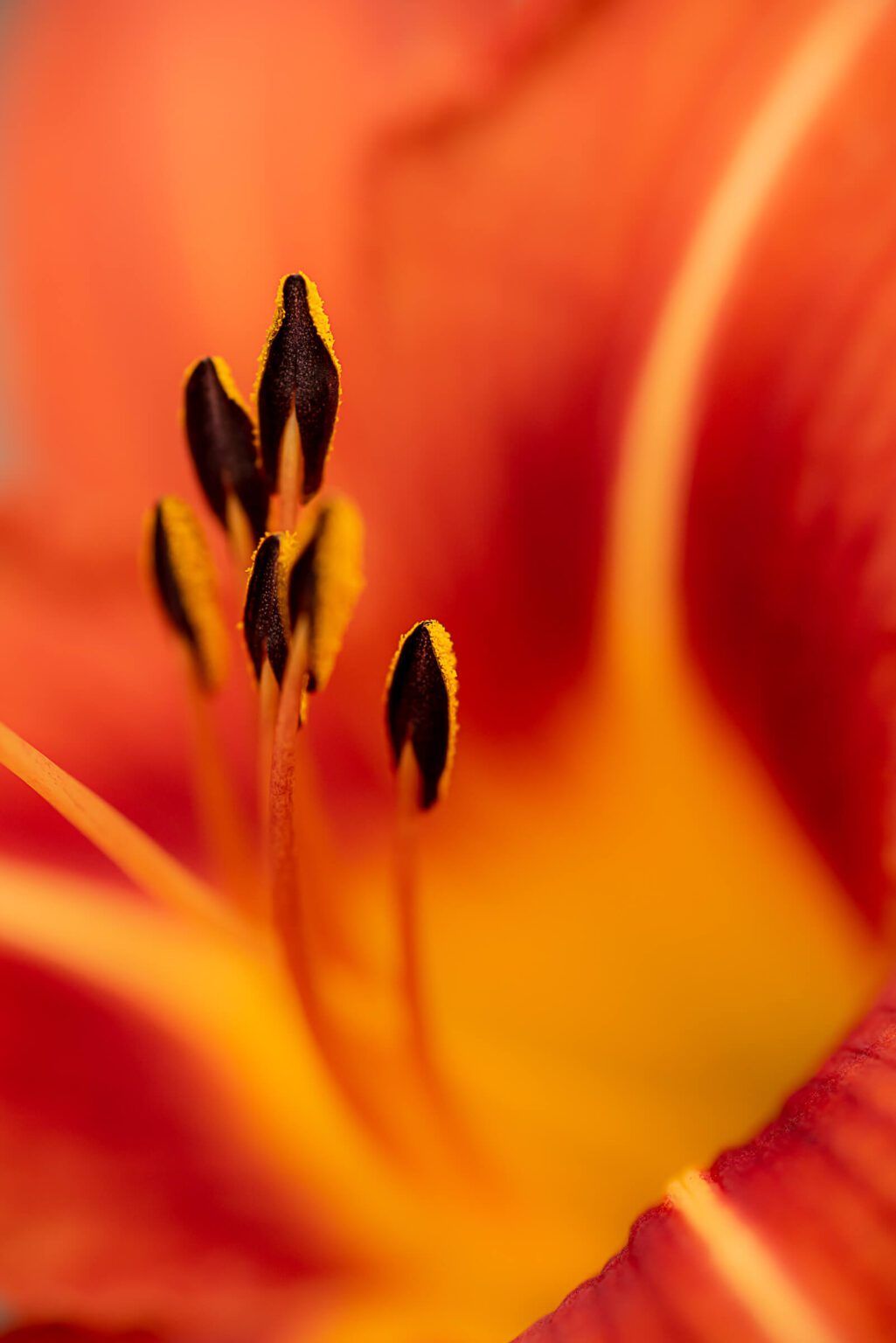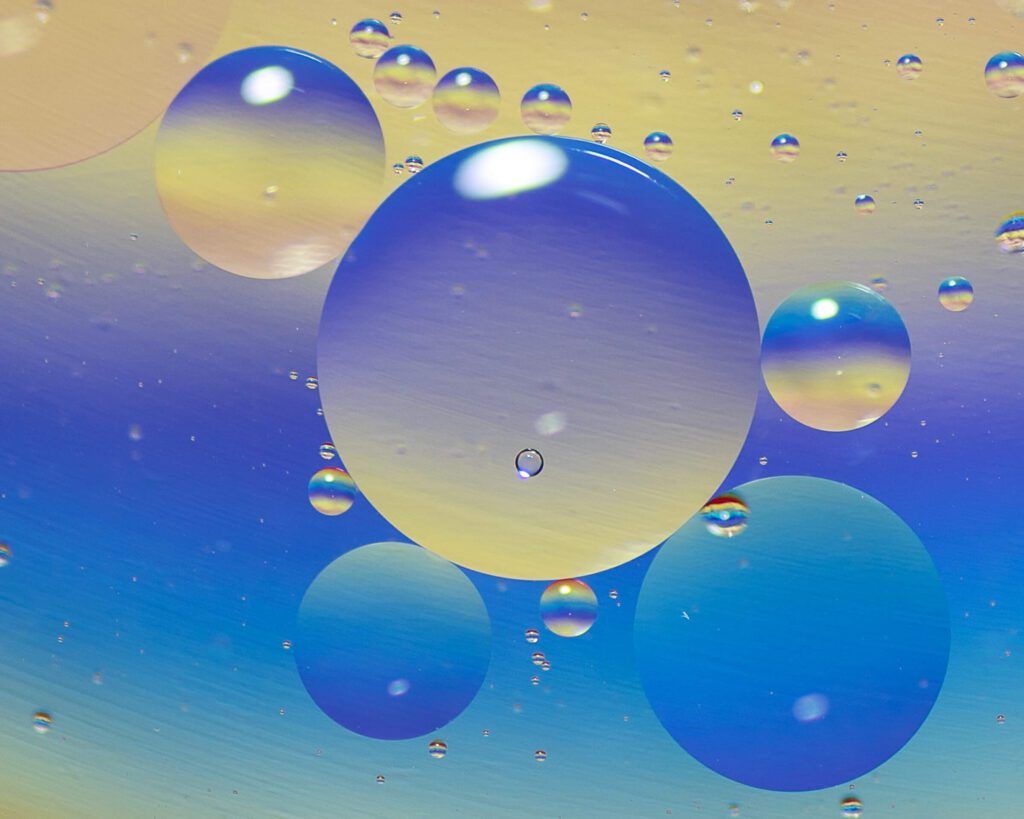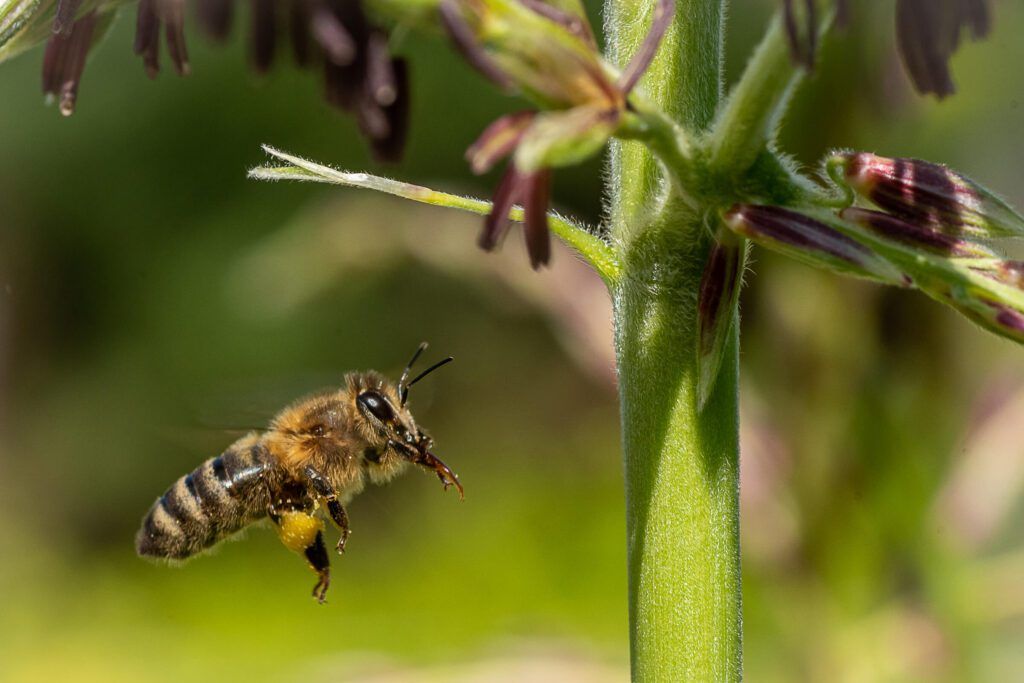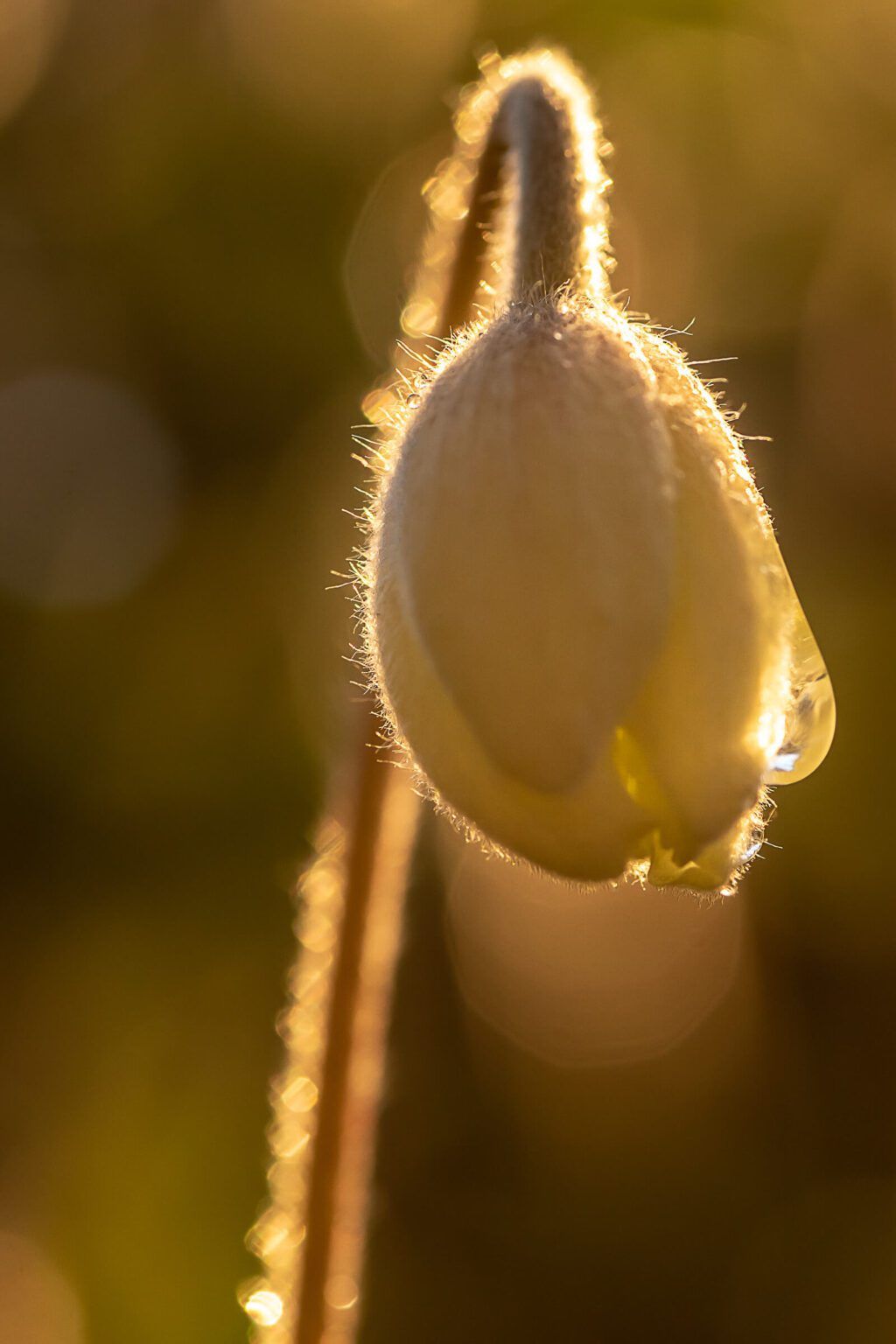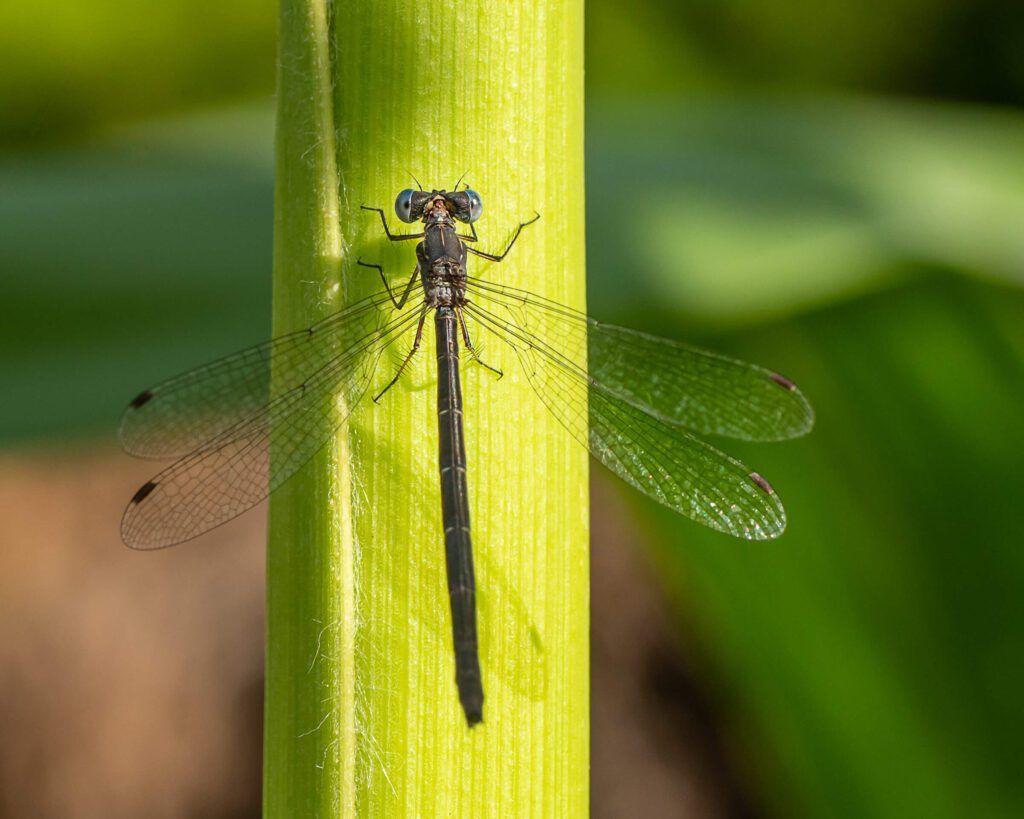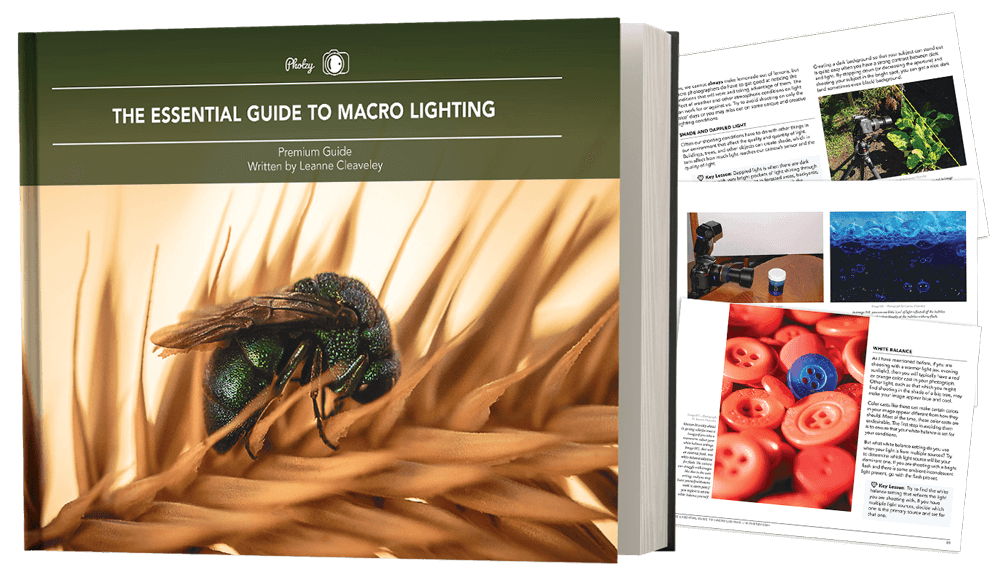Macro Snap-Shooters vs. Elite Creative Macro Photographers
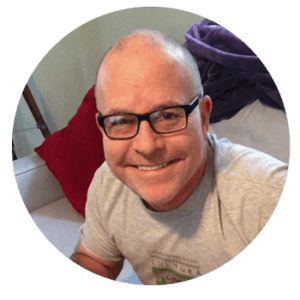
New / Noteworthy
EDITOR’S NOTE: This post is brought to you by our partners DailyColors.co a super-short newsletter for daily color palette inspiration! TRY IT FREE →
There are two mindsets to approaching macro photography.
In the first, you grab your camera and go out looking for something to take a picture of. In the second, you develop your skills to create your macro photos using not only your camera – but also the environment and your mindset.
Leanne Cleavely doesn’t just partake in macro photography. She studies it in earnest. She spends her days crawling around on her hands and knees, exploring and creating elite macro images. This exploration has led her to embrace a powerful mindset.
Lighting is a critical factor in the success of every macro photo.
As she describes it: “Macro photography poses many challenges to photographers for a variety of reasons. But most of those challenges always come back to the main ingredient for ALL photographs, and that is light.”
Her quest to become the best macro photographer that she could possibly achieve is synthesized in The Essential Guide to Macro Lighting. This eBook takes us along on her journey of discovery and growth. We learn the power of lighting in macro photography and how it impacts our ability to improve.
Cleaveley’s work demonstrates how our choices, whether conscious or subconscious, affect what we want with the outcome of our effort to be and how others will perceive it- those who didn’t experience the moment with us.
Much of the success that we can expect from our macro photography is based on a mindset of creating versus simply snapping a picture.
Photo by Leanne Cleaveley
In The Essential Guide to Macro Lighting, Cleaveley writes:
“Light is necessary to properly expose an image. That is its most basic function. So, what is different about macro photography? Well, there are a few factors that make getting that light to your camera sensor a little more difficult.”
There are two mindsets to macro photography 👇
The Snap Shooting Macro Photographer ❌
- Just picks up their camera and looks for subjects.
- Doesn’t pay much attention to camera settings.
- Uses the existing light- whether it is good or bad.
- Uses the first camera position that comes to mind.
- Rarely thinks outside their first impression.
- Makes no attempt to alter or add lighting to improve their shot.
- Tends to rely on post-processing to find self-satisfaction with the result.
The Elite Creative Macro Photographer ✅
- Carefully chooses their subjects and researches them.
- Makes careful choices on their camera settings to maximize the photographic potential of their subject.
- Uses available light when it is pleasing to the subject.
- Alters existing light to improve it.
- Adds lighting when the situation calls for it.
- Carefully considers the camera angle, including how the lighting affects the subject and what is going on in the background.
- Spends time with each subject.
- Uses post-processing only to enhance what was captured in the camera.
Photo by Leanne Cleaveley
Your perspective on your macro photography workflow plays a critical factor in your success. Are you of the mindset that just takes a picture without much thought? Or, are you of the mindset that wants to explore your subjects and capture them in a way that is uniquely you?
In The Essential Guide to Macro Lighting, Leanne writes:
“Macro photographers face two main lighting challenges. They tend to work at a higher f-stop to increase their images’ depth of field (DOF). This factor means less overall light reaches the camera sensor. Also, because of how close they get to their subject, they often create shadows with their camera and lens.”
We’ve all had our own shadow ruin a photograph!
What becomes desirable for the macro photographer is to recognize problems when creating a picture rather than at home feeling dismay at what we see on our computer screens.
We value quality, beauty, nature, and art. These are desirable attributes. It’s normal to want this.
However, there is another mindset. One that believes these traits were not in the hand you’ve been dealt. And that you must live with that. But…
Photo by Leanne Cleaveley
In The Essential Guide to Macro Lighting, Cleaveley writes:
“Thankfully, these lighting challenges can be overcome. When a photographer who is practicing macro shooting grasps a good understanding of light- they then can be quite successful in creating unique and interesting images.”
Why accept defeat and less-than-stellar shots rather than overcoming a few learnable skills that you haven’t mastered yet?
Your passion for macro imaging pushes you to stretch your abilities. Sticking to it- even when things haven’t gone well- is the hallmark of an Elite Creative Macro Photographer.
People that accept this thrive in the most challenging times of their photographic journey.
Putting it into Practice!
Our ideas about success and effort come from within. Some realize the value of challenging themselves. They want to learn and grow. Others avoid challenges, acting as if it doesn’t matter.
In The Essential Guide to Macro Lighting, Cleaveley writes:
“There are many options for lighting out there. Lighting options have increased dramatically over the last few years. There are some amazing tools that you can purchase and things that you can utilize from around your home. I will show you some of both that I have come to love and let you decide what will work for you.”
“When people talk about natural light, they are typically speaking about light from the sun. The quantity and quality of that light can vary quite a bit, which can be a pro or a con depending on how you look at it.”
“Natural light can vary a great deal depending on the weather, time of day (where the sun is in the sky), time of year, and the effects of other nearby objects such as trees and buildings.”
“So, we are resigned to shooting during the daylight hours and or utilizing artificial light sources. And those daylight hours can vary quite a lot as well.”
“A drawback for any photographer is that when you diffuse a light source, you are taking away some of the light’s strength. And for macro photographers, who need to squeeze out every bit of light that they can for their images, they may need to sacrifice something else to make their shot work.”
Photo by Leanne Cleaveley
From Setback to Success!
In The Essential Guide to Macro Lighting, Leanne writes:
“Macro photography is often about weighing the different options and figuring out what you can or cannot sacrifice in challenging lighting conditions. It can also be about turning those challenges into advantages. Do not be afraid to try shooting macro in varied conditions- but DO have a plan B for when things do not go as you envisioned.”
We learn from our mistakes.
You’re not a failure until you begin placing blame elsewhere. That’s when you stop learning you’re your mistakes – when you deny them. (Or, try to poorly save them in post-production.)
The Power of – Yet to Come!
“Artificial light, like natural light, can come in a variety of strengths and can demonstrate very different qualities depending upon the source. Access to artificial light sources means that you do not have to wait for the light to be ‘just right.’ It provides macro photographers with a greater sense of control. It allows for portability, meaning that macro photographers can take the light to where it is needed.”
– Leanne Cleaveley
In The Essential Guide to Macro Lighting, Leanne writes:
“The first flash that many photographers encounter is the one built into our cameras. It is also a light you will rarely use as a macro photographer.”
Many of us contemplate an external lighting device. But we get trapped in the ‘Not Yet’ mindset. When we should be thinking – it is yet to come!
“With artificial light sources, you do not need to spend a lot of money. One of the great things about macro photography is that some of those small, cheaper light sources that you already have in your home can be quite effective because you are working close to your subject, which isn’t very large.” - Leanne Cleaveley
Photo by Leanne Cleaveley
It’s easy to fall into the trap of accepting what we have now. What we are producing now is okay. Why should I try to get better?
But praising the process of learning can and will elevate you to new heights that you never imagined.
Think of the phrase, ‘not yet.’
This means it is yet to come. You haven’t thrown in the towel and accepted your status as your lot in life.
In The Essential Guide to Macro Lighting, Cleaveley writes:
“Years ago, a friend introduced me to macro photography by loaning me his macro lens. I was curious and nervous about playing with it. My first few images came out completely underexposed, and I soon learned that shooting with a macro lens presented new challenges that I would have to contend with.”
“I persevered through navigating the ins and outs of this new piece of equipment, and I have to say that I am forever grateful to my friend for pushing me to do so.
Macro imaging provides a whole new way to view everyday subjects.
For me, it has moved from a hobby to a passion, and I can honestly say it is now my favorite genre for creating images.”
The Essential Guide to Macro Lighting is a must-read for anyone wishing to explore the macro world of photography in a new, innovative, and creative mindset.
Leanne Cleaveley’s work is simply outstanding.
BONUS – I've got something special for you on the next page...
If you’d like to gain a complete mastery over lighting for macro photography with in-depth training, do take a look at Leanne Cleaveley’s Essential Guide to Macro Lighting to get started.
It’s 139 pages of step-by-step instructions that will truly take your macro photography to the next level. With 117 example images, 53 self-check questions and 22 key lessons, you’ll learn the ‘What’, ‘How’, and ‘Why’ of macro photography lighting.
If you missed out on your copy last time, it’s available again, and on sale right now.
Click below now, to read about it on the next page…
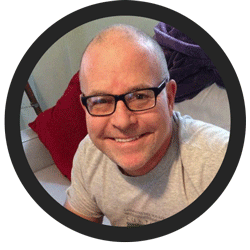
About Kent DuFault
Kent DuFault became a photographer in September of 1974. He took a “Basic Photography” class in high school and was hooked for life. He recommends The Essential Guide to Macro Lighting to those who want to learn the art of lighting for macro photography and create stand-out macro images.

